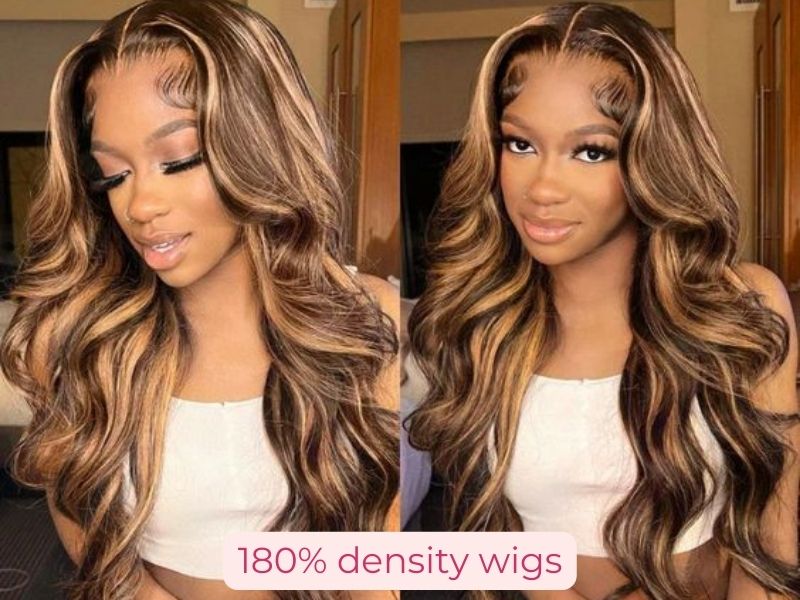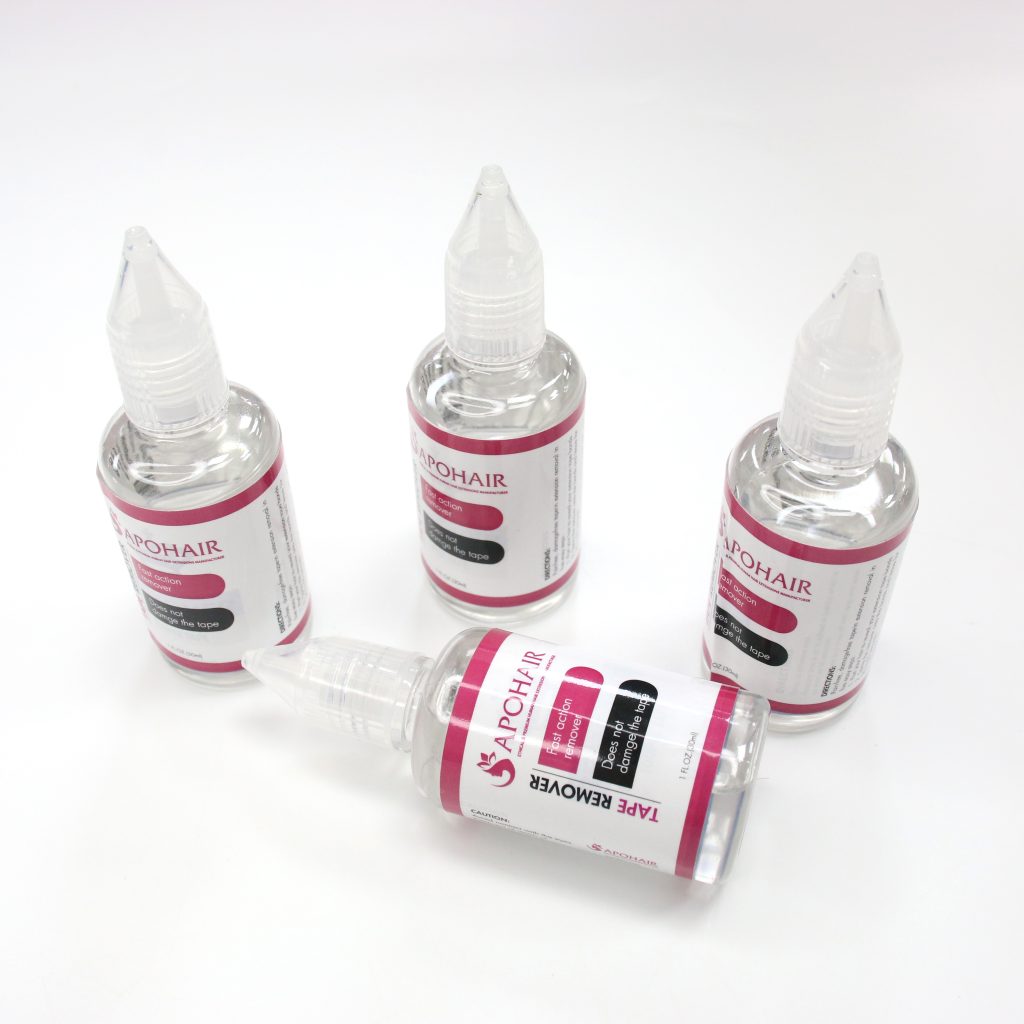Blog, Wigs Knowledge
Wig Density: Definition, Options, How To Choose, And More
Wigs are becoming increasingly popular for women who are looking for the beauty that comes from long, flowing hair without having to wait for it to grow or have unwanted hair density or length. However, finding a wig that suits your needs can be a big challenge. Wig density is one of the most important factors when buying a wig. Below, let’s unlock the secrets behind it including the definition, the diverse range of options available, how to make the perfect choice to help you choose the ideal option for your style preferences and desired look.

What Is Wig Density?

Wig Density Options
Wig density is measured on a percentage scale, ranging from 60% to 250%, where a higher percentage signifies a thicker wig. In this guide, we’ll explore the various wig density options to help you make an informed choice for your perfect wig.
Low Hair Densities
For a natural and non-wiggy appearance, low-density wigs are the ideal choice. As you shop for your wig, keep an eye out for these natural or low-density options:
- 60% – 90%: These are the lowest-density wigs, ideal for older individuals with naturally lower-density hair due to aging.
- 100% – 110%: Widely considered low-density wigs, suitable for those with naturally thin hair who plan to leave some of their natural hair exposed. It provides a seamless match.
- 120% – 130%: These densities are standard in the wig industry and are quite popular. They closely resemble the density of the average human head, making them ideal for achieving a natural look.

Medium – Wig Density
If you’re seeking a bit more volume and versatility, consider medium-density wigs. Here are some options to consider:
- 150% Density: this density offers a step up from the standard 120-130% range. It provides a fuller appearance while still maintaining a natural look. Wigs with 150% density offer added volume for your hairstyles without appearing entirely artificial.
- 180% Density: 180% density wigs are highly favored by actors and celebrities due to their ability to provide the wearer with exceptionally full and thick hair, allowing for a range of stunning hairstyles. However, these wigs tend to be relatively expensive compared to 150% density wigs.

High-Density Wigs
- 200% Density: These hair density for wigs are even thicker than 180% density wigs and come with an abundance of hair. Choosing a wig with 200% density requires confidence to carry off such a bold and voluminous style.
- 250% Density: This is the densest wig available, offering an extravagant amount of hair. Wearing a wig with 250% density won’t resemble your natural hair, but it’s perfect for individuals who adore larger-than-life, statement-making hairstyles. It provides you with ample hair to create a wide range of eye-catching looks.

How To Choose The Right Wig Density
Now, you want to know what is the best density for wigs. Selecting the ideal hair density for your wig depends on your desired look and several factors to consider:
1. Hairstyle
The style you want influences the density choice. Long, straight styles often require higher density for a fuller appearance, while curly wigs can be less dense and still appear voluminous.
2. Your Natural Hair Density
To blend your wig with your natural hair, choose a density that closely matches your hair. For the most natural look, aim for the same density as your natural hair.
3. Face Shape
Your face shape matters. A dense wig may overpower a small face, making it appear unnatural, while a denser wig can balance features on a larger face for a symmetrical look.

4. Personal Preferences
Your personal preference plays a significant role. Some prefer thicker, high-quality Remy wigs, while others opt for thinner, more budget-friendly options. Ultimately, your choice should align with your personal preferences for a 100% human wig.
5. Length
Consider the length of your wig when determining the appropriate hair densities and based on the wig length chart, as different lengths require different densities for a natural look:
- Short (6 to 10 inches): Opt for a density between 120% and 150% for short styles. This range ensures a natural appearance without excessive bulk.
- Medium (12 to 16 inches): Medium-length wigs benefit from densities between 130% and 180%. Choose within this range based on your desired volume.
- Long (18 to 22 inches): Longer hair looks best with higher density, typically between 150% and 250%, to achieve volume and fullness.
-
Extra Long (24 inches to 30+ inches): For exceptionally long hair, a density of 250% is recommended to ensure fullness from the roots to the tips.
Difference Between 150%, 180% And 200% Density Wigs
The difference between 150%, 180%, and 200% wig density lies in the amount of hair attached to the wig cap:
150% Density Wigs
180% Density Wigs
Wigs with 180% density have around 180 hairs per square inch on the wig cap. They provide a fuller and thicker appearance compared to 150% density wigs, making them popular among actors and celebrities who desire voluminous hairstyles. While they offer versatility in styling, they are usually more expensive than 150% density wigs.

200% Density Wigs
These wigs contain approximately 200 hairs per square inch on the wig cap, making them the thickest and fullest option. They offer an exceptionally voluminous and glamorous look, ideal for those who want dramatic hairstyles or have naturally thick hair. However, they can be heavier and require more maintenance than lower density wigs.
FAQs About Hair Densities
1. What Density Wig Looks the Most Natural?
In general, wigs with lower density levels tend to appear more natural compared to higher-density wigs. A wig with a density ranging from 130% to 150% is often regarded as the ideal choice for achieving a natural look. This density range strikes a balance by providing volume and fullness without appearing overly dense or artificial.
2. What Is The Best Hair Density For A Deep Wave Wig?
Selecting the best density for a deep-wave wig is a matter of personal preference. Typically, a density of 130% to 150% is a solid choice for achieving a natural-looking deep-wave wig. However, if you desire a more voluminous appearance, you can opt for a higher density. Ultimately, the choice should align with your desired style and level of volume.

3. Is 180 Density A Full Wig?
A wig with a density of 180 is indeed considered a fuller wig, and it is more noticeable compared to wigs with a density of 150%. The higher density gives it a hefty and voluminous appearance. This density works well for both short and long wigs and is often favored by performers and young artists for its striking and glamorous look.
4. Is High Density Hair Thick?
Hair thickness and hair density are different elements of your hair’s characteristics. Hair thickness refers to the width of an individual strand, while hair density relates to how closely your hair follicles are distributed on your scalp. In summary, thickness concerns the strand size, while density deals with follicle proximity.
Wig density and hair thickness are two distinct but related aspects of hair
In Summary
In summary, the difference between these wig densities lies in their thickness and fullness, with 150% density being the most natural-looking, 180% density providing extra volume, and 200% density offering the most dramatic appearance. The choice between them depends on personal preference, desired hairstyle, and budget. Read the instructions above carefully to choose the best wig density for you. Apohair – hair factory in Vietnam specializes in providing high quality wigs for people looking for wholesale hair vendors all over the world.
Next article: 360 Lace Wig vs Full Lace Wig












